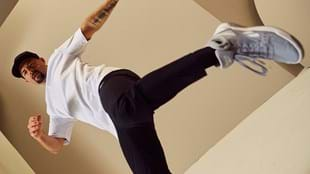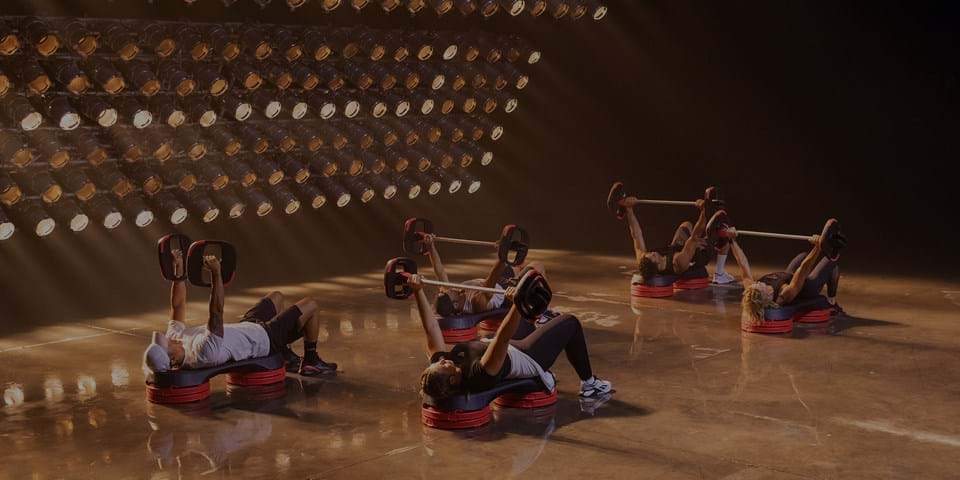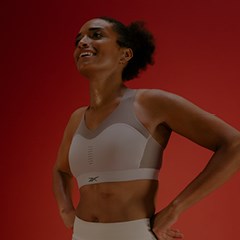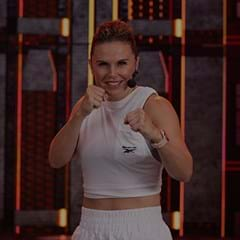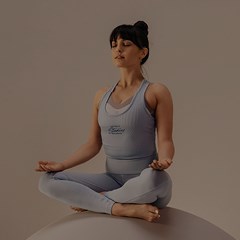SARAH SHORTT: Hi G, congratulations on your 100th release! Could you share a little history of the program?
GANDALF ARCHER MILLS: It was born out of the world of 90s hip hop workouts and a class at Les Mills Auckland City we used to call “cardio funk”. Les Mills International (LMI) had already launched BODYPUMP™ and BODYSTEP™ internationally and saw the opportunity to offer a dance-based workout to clubs. BODYJAM was developed in New Zealand in the late 1990s, and launched on the global stage with BODYJAM 15.
You’ve been choreographing the program for a long time now. When did you first start teaching the class?
I was actually involved right from the start. The original BODYJAM choreographer was an amazing woman called Ruth Pirihi, who gave me huge support through my early years of dance (as she did for many others) and she also taught dance classes at my school. When I was 12, she got a group of four of us to start teaching classes, and so every morning before school we would teach these 10-minute aerobics/hip hop routines to the rest of the kids.
(“Teaching” might be a bit strong. We got on stage, pushed play and would do a lot of movements to 2Unlimited who created bangers like Get ready for this and Tribal Dance.)
When I started at Lynfield college aged 14, I enrolled in a course Ruth was running to train group fitness Instructors and she enlisted me – along with a few others – to start contributing to the early BODYJAM choreography. There were about five of us that’d meet up in what is now the LES MILLS GRIT™ studio in Les Mills Auckland City.
Every week my Mum would give me five dollars to go buy a cassette tape with the latest song I loved. I’d turn up to those sessions with my new tape and say: “Let’s choreograph something to this.” We’d make something up and then go teach it that night in a BODYJAM class. Ruth taught me so much about choreography and how to create simple routines with lots of feel.
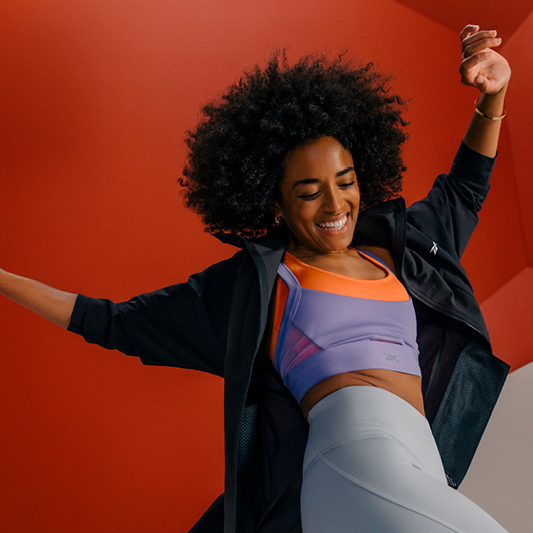
And when did you start choreographing the class?
I don’t think I contributed any choreography to BODYJAM 1, but I definitely added some choreography to BODYJAM 2. I was part of the team that were on the videos of BODYJAM when it was only being taught in New Zealand.
Chris Richardson was also teaching, Kirsty Wright, an incredible dude called Peter Leo… he was like a GOD to me! There were all these 1990s Auckland City fitness legends who have moved on and are doing other things now but hold a very strong place in my heart. In those early days, seeing how everybody worked, how everybody operated, the commitment to dance and the love of music and movement had a huge impact on me as a teenager.
For years, we filmed BODYJAM using just one camera held by a lovely old gentlemen called Frank with nobody else in the room. It was just a video for Instructors to learn the moves – super low budget and super, super awesome. We all loved it.
Ruth left Les Mills in 2004 and the business embarked on a global search for the new BODYJAM choreographer. They did a huge advertising campaign to find the new Program Director, but in the meantime, they still needed a new release made. They asked me to choreograph the next release – which turned out to be my audition for the role.
I put together some interesting ideas that nobody had seen before, plus I did a backflip… and I got the job! I’ve put together every release since then. I’ve worked with a bunch of amazing choreographers over the years, including Guillaume Lorentz, Parris Goebel, Magnus Ringbur, GG from France... but mostly it’s just me by myself with my headphones on in the studio.
We filmed the class using this insanely beautiful new technology called XR – extended reality – where the cameras and computers talk to one another to create this incredible three-dimensional world around the presenters. When you see the release, you’ll know what I’m talking about because it looks completely bonkers.
What’s your process for putting a BODYJAM release together?
I start with the music – I’ll get 10 songs and put them into an order in Logic on my Mac that I think works really well. I repeatedly listen to the songs that I think are going to go at the end of the block – that the routine is going to finish with – and I choreograph what I think is going to work listening to those last two songs.
I’ll then go back to the first song and start to break it down, and during this process I’ll change most of the choreography again. I might change more than half of it completely, so that the choreography matches the first, second, third song and so on… culminating in the end product that I was going for at the start with those last two songs.
To do one block from start to finish takes me two to three weeks, and BODYJAM has two big blocks, plus all of the stand-alone tracks.
Calling all BODYJAM lovers!
To celebrate BODYJAM 100, we’re creating a mash-up video featuring YOU – BODYJAM Instructors around the world – doing the 100 BEATS routine. Want to feature in the video? Learn the routine here, and submit a one-minute video to social@lesmills.com by Monday May 16th, 2022.
Les Mills will be sharing the 100 BEATS routine as an Instagram Reel for you to use the 100 BEATS audio and share your own Reel.
#100BEATSofBODYJAM #unitedwedance
What’s different about BODYJAM 100?
The concept of the release was to both celebrate the history of the program, but also to look forward to the future.
In terms of looking forward, we filmed the class using this insanely beautiful new technology called XR – extended reality – where the cameras and computers talk to one another to create this incredible three-dimensional world around the presenters on the stage in real time. When you see the release, you’ll know what I’m talking about because it looks completely bonkers, which I think is a cool way to showcase where BODYJAM is going.
In BODYJAM we get to experiment a lot – with music, style, and class structure. So BODYJAM 100 is a perfect representation of this experimentation, because when Instructors receive the release they’ll not only get the normal 55-minute workout, they’ll also get an extra 45 minutes of BODYJAM choreography – taking the total minute count to 100!
Each bonus block is roughly 22 minutes. One is hip hop, the other is house, and all the music is made up of previous BODYJAM tracks from the past 99 releases that we’ve re-licensed from the record labels. I’ve taken choreography from previous releases and chopped it up to make new blocks of movement to those songs. The two bonus blocks are a mash-up of many different songs and many different movements and dance styles to create something new.
The other cool thing we did in the regular BODYJAM 100 55-minute class is to create a block of choreography called “100 Beats”. I loved the challenge of creating this, because most BODYJAM routines are comprised of 64 beats. I got out my calculator and did some math and worked out that I could make a regular BODYJAM routine with an extra section – and then an extra 4 counts to equal exactly 100 beats.
It was challenging because the music is generally phased into counts of 32 (as all Instructors will understand) and 100 is obviously not divisible by 32. So the routine starts four counts, followed by 12 lots of eight to give you exactly 100 beats.
The other cool thing is that I created a song specifically for this block, called 100 Beats, and the 100 beats of choreography flows perfectly through the track.
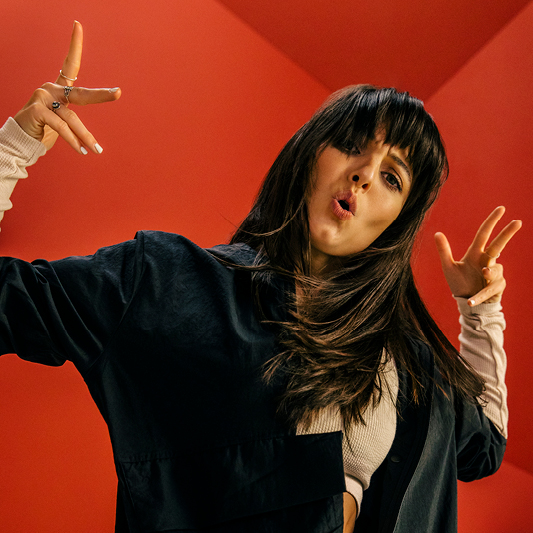
What makes BODYJAM different from other dance workouts?
Well when I teach BODYJAM my fitness watch is like: ‘What is wrong with you? Nobody has ever danced this hard in the history of the world!’
I think that’s because when you go to a normal dance class, people don’t generally have a high level of exertion. But the thing about BODYJAM is that it’s such a huge workout. Once you have done a new release two or three times and you have a better knowledge of the choreography, you can really work yourself up into quite the fitness frenzy.
The other thing about BODYJAM is that the rewards are different from other programs out there. You go to a BODYPUMP class and you know it’s working because your biceps hurt, or you do BODYATTACK and you know it’s working because you’re exhausted. Whereas in BODYJAM – that can’t breathe cardio exertion is there if you want it, but that’s not the main point of the class. The key feature is that you get to feel the music and move your body in really inventive ways. It’s incredibly rewarding for your mental health, your soul, and your happiness to dance with a group in these different styles.
What you get from BODYJAM is wellness. It's more along the lines of what you get from something like yoga, where you experience this beautiful state change into something euphoric and happy. You leave a BODYJAM class and your world is filled with more light than before.
The thing about BODYJAM is that it’s such a huge workout. Once you know the choreography and it’s the third or fourth time you’re doing the release, you can really work yourself up into quite the frenzy.
What do you love about BODYJAM?
Right now, I love making the music. I really love the challenge of designing songs. The song structure, the sounds, the bells, the drops... I love the whole process.
I love it 'cause when I start a song, there's nothing there. I get to make every single decision. It's like writing a novel and starting a blank page that you get to fill with your words. You get to decide every single element of every single sound that goes anywhere in the song and change it to suit where you think it should be. It's complete creative freedom.
And what’s your stand-out most amazing BODYJAM experience?
I’ll never forget BODYJAM 74 at the Grand Palais with 5,000 French people. I think 74 is one of the best releases for the music and styles and simplicity and complexity… and I had 5,000 people all doing this new release they’d never seen before and going crazy. When it finished, I was completely overwhelmed and full of emotion. I went to the back of the room, found some concrete steps to lay down on and stared at the ceiling for like 20 minutes, needing the space to process what had just happened.
I’ve had lots of amazing filming experiences that didn’t feel like filmings at all – they just felt like normal classes. There was one with Chris Richardson which felt like freestyle teaching for an hour. He was standing in the middle of the stage screaming, “One more?” with his hand in the air and I saw him standing there, threw my body between his legs and went, “One more!” He didn’t know I was there, ‘cause I was right underneath him, and then he took a step back and he fell over. It was pretty funny, classic us.
Share your BODYJAM 100 experiences on social with this toolkit



